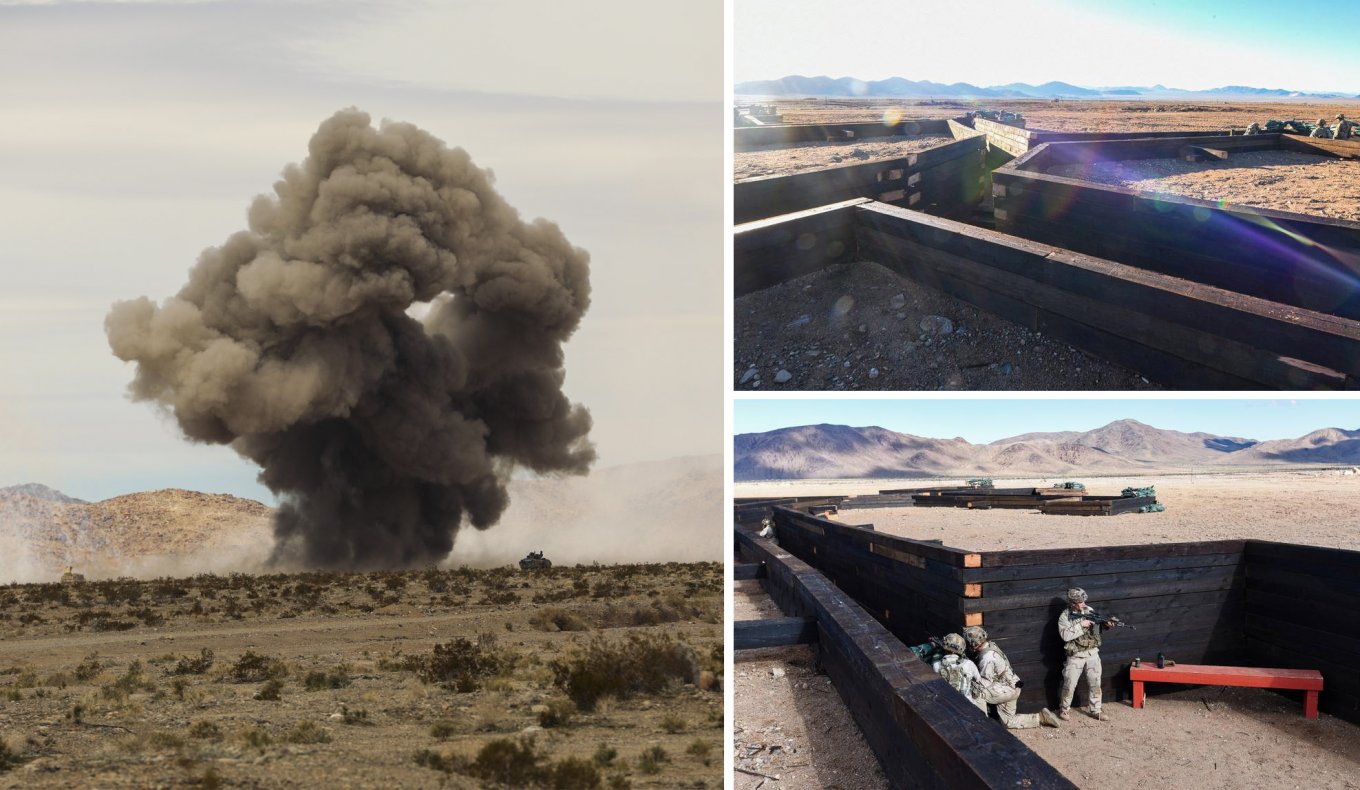Late February 2023, a combat team of the 3rd Infantry Division’s 2nd Armored Brigade took part in a several day training as part of a course of preparation to deployment in Europe in mid-summer this year. The U.S. army is always interesting in a way how flexible it is in training its own soldiers based on the new battlefield conditions, the observation of the enemy, and applying the experience of other armies to make conclusions of its own.
These drills reflected in a detailed report by Stars and Stripes took place at Fort Irwin in California, and considering the scenario, it can be interpreted as nothing but preparation for a potential fight against the russian army. As the story goes, hostile Donovia invaded the allied country of Atropia and thus a major war broke out. The combat team, named the Spartan Brigade, was assigned to join an exhausted brigade of Atropian forces and force the enemy out of occupied territories in nine days.
Read more: Based on Ukrainian Military’s Experience, the US Army is Experimenting With Dropping Grenades from Drones, China Begin Production of ‘Flying’ Mortars

The Spartan Brigade was faced against the 11th Armored Cavalry Regiment nicknamed Blackhorse Regiment which despite its name is a heavy combat unit of brigade type, with a permanent base in Fort Irwin. This way they simulated a factor of one side being more knowledgeable about the local territory, its terrain and other conditions.
One of the new aspects of the training was trench warfare, the last time American military saw them so largely used was maybe back in the days of World War II. The "hostiles" also used "relentless barrages of artillery fires" and swarms of cheap kamikaze drones, and also actively applied EW interference to suppress communication.
Also, given the description of the exercises, the parties did not use aviation, which is also a simulation of the limited use of air weapons in Ukraine and an extremely unusual scenario for the U.S. Army.
Any concentration of forces was shelled with artillery fire, so for the first days of training, the Spartan Brigade focused on counter-battery warfare; it resulted in Blackhorse Regiment losing one or two artillery systems each time they opened fire. Therefore the "hostiles" had to decrease the intensity of the barrage, and it turned the scales.

After mitigating the "adversary's" advantage, the Spartan Brigade made use of its technological superiority: for the drills, they brought 87 new Abrams M1A2 SEPv3's, 125 M2A4 Bradley's, and 18 M109A7 Paladin self-propelled howitzers. In other words, all the newest combat vehicles united in a universal data exchange system. Moreover, for better precision, the combat team had 13 M7A4 BFIST – Bradley Fire Support Team Vehicles. On a side note, the Pentagon announced the transfer of M7A4 Bradley BFIST to Ukraine this February.
We can also see some interesting ideas for better situational awareness in the photos from the drills. Such as the use of a quadcopter drone on a line installed on top of Bradley. These drones were made within the Enhanced Ground Reconnaissance Initiative aiming to provide means of reconnaissance when affected by dense enemy jamming.

Although despite this technological advantage, the Spartan Brigade still had to send infantry to clear out the trenches, similar to the ones dug by russian army in Ukraine. It turned into a "knife fight" as noted by the general in charge of the drills, the infantry assault groups were destroyed by mortar fire, and a trouble was to clear the path with remote demining tools.

Over these nine days of training, with the first two being characterized as the most difficult, when the troops had to deny further advancement of "hostiles," the units of the 2nd Armored Brigade managed to advance 150 km forward. The summary of the drills was well worded by the Sgt. William Hader, a forward artillery observer with 2nd Brigade, a veteran of combat in Afghanistan, who said "It’s high casualty warfare. It’s a totally different fight."
Going further into the preparations, the Spartan Brigade will have several more rounds of drills focusing on operating in the European theater of war and will depart for a 9-month rotation in summer.
Read more: The New US 460-Million Aid Package Includes the Unusual M7 Bradley BFIST IFV














